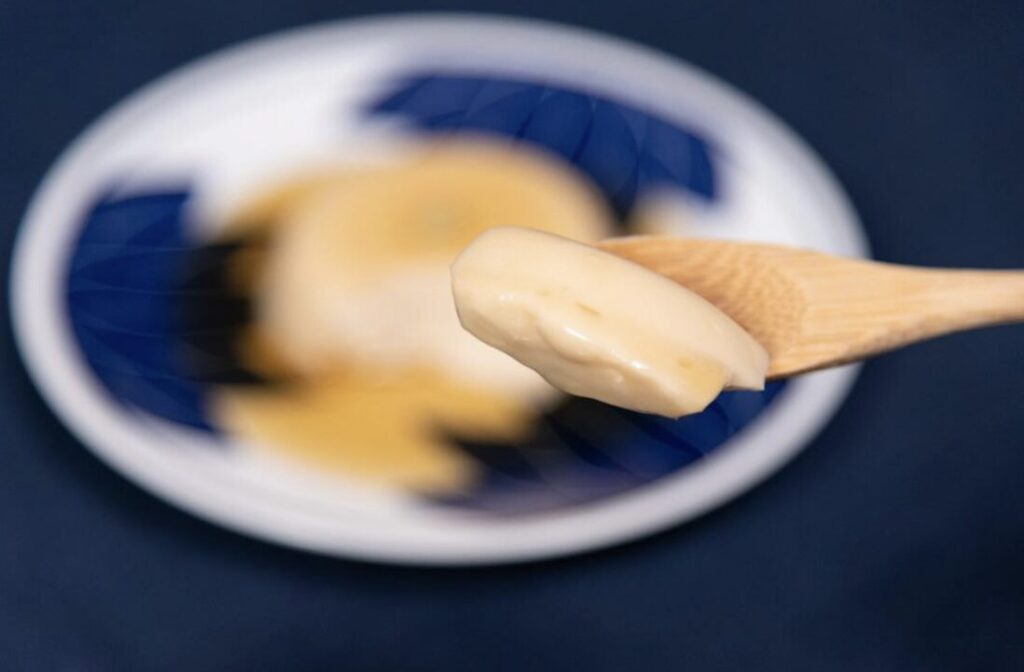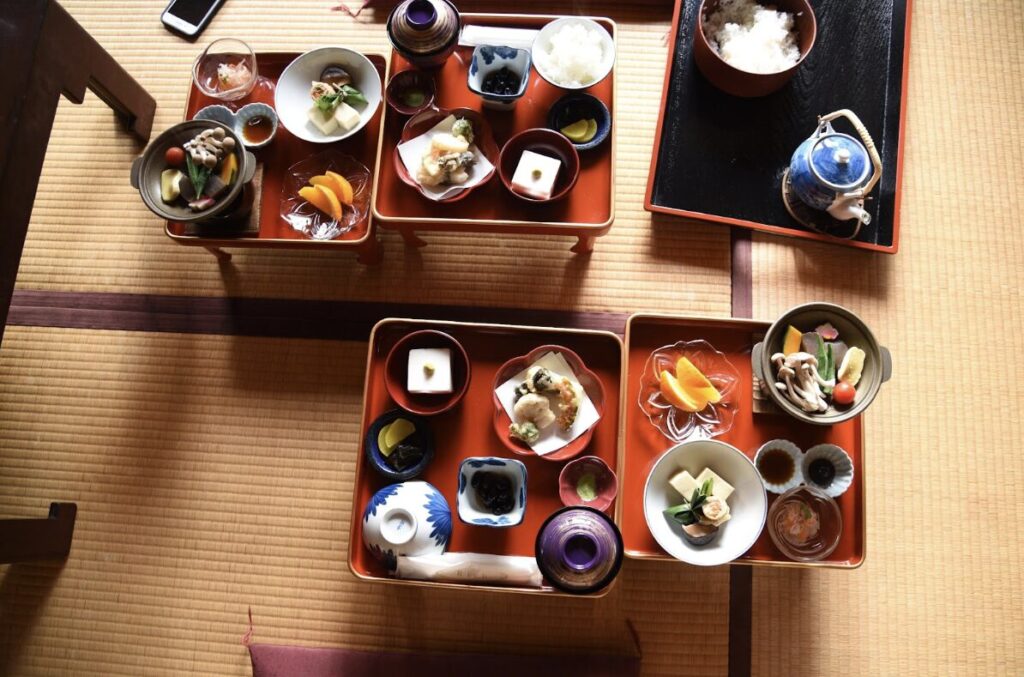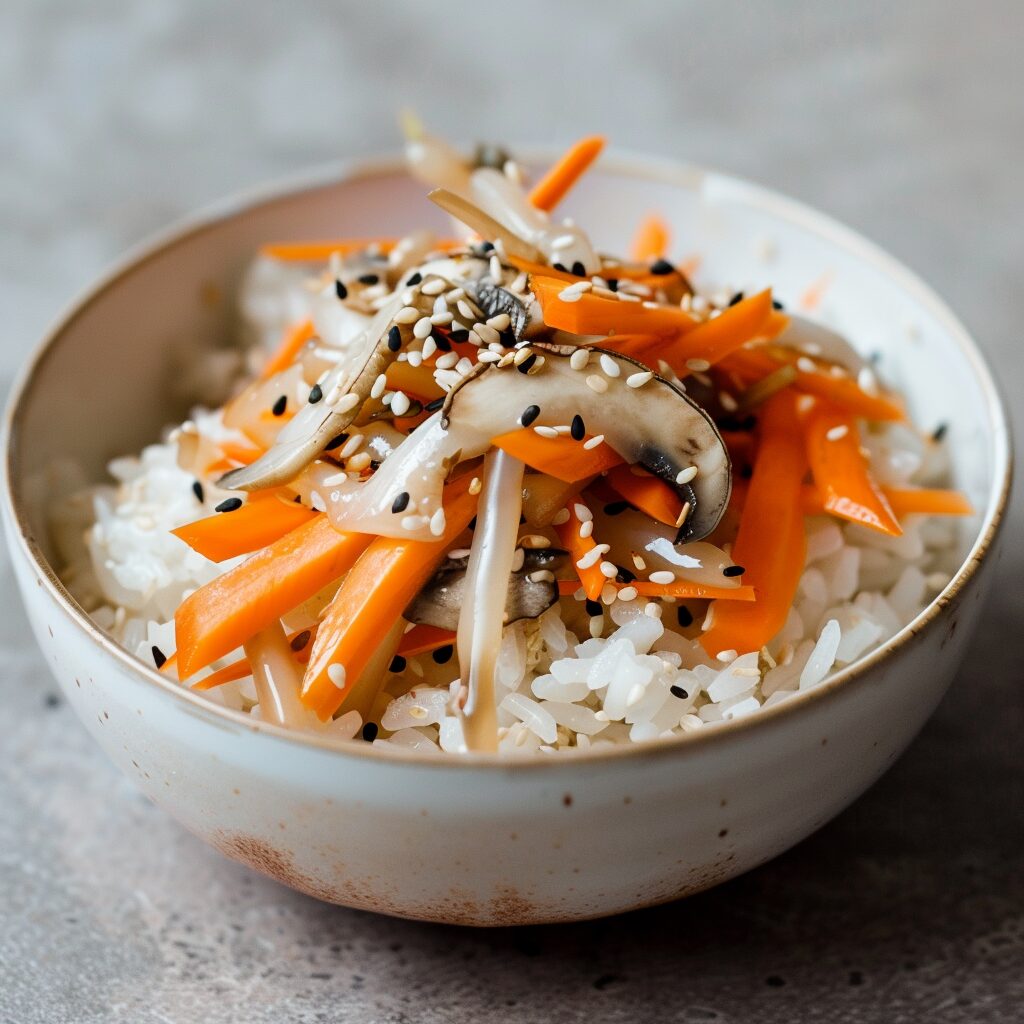Introduction
In the diverse tapestry of Japanese cuisine, Black Sesame Tofu emerges as a dish that marries the subtle, creamy texture of tofu with the rich, earthy tones of black sesame. Its origins, while not ancient, are steeped in the Japanese tradition of innovation and respect for ingredients. This dish holds a special place in my culinary journey, reminiscent of the first time I savored its unique flavor in a quaint Tokyo café, where the contrast of the sesame’s boldness against the tofu’s mildness left a lasting impression.


Cultural Context
Gomadoufu, or sesame tofu, is a dish with deep cultural significance in Japanese cuisine, particularly within the context of Buddhist cookery. It is historically associated with fucha ryōri, a Chinese-style of Buddhist cooking that was introduced to Japan in the 17th century. This dish is considered a quintessential shōjin dish, embodying the virtue of diligence—a value highly esteemed in both Buddhist practice and Japanese society. The preparation of Gomadoufu requires patience and meticulous attention, reflecting the meditative and mindful approach to cooking and eating in Buddhism
Ingredients Spotlight
The essence of this dish lies in its simplicity and the quality of its ingredients:
- Konbu dashi, a seaweed broth, provides a subtle umami backdrop.
- Nerigoma, or black sesame paste, imparts a deep, nutty flavor and striking color.
- Kuzuko, or arrowroot starch, acts as a thickener, giving the dish its characteristic smooth texture.
- While traditionally, white sesame may be more common, the use of black sesame paste offers a bolder taste and an intriguing visual appeal.
Health Benefits of Black Sesame Tofu
Black Sesame Tofu is not only a feast for the senses but also for the body. Black sesame seeds are known for their high calcium content and antioxidants, while tofu is a great source of plant-based protein and iron. This dish is a healthful addition to any diet, promoting bone health and providing essential nutrients.


Ingredients
- 600mL konbu dashi, alternatively water
- 60 grams nerigoma (black sesame paste); alternatively white sesame paste
- 50 grams kuzuko, arrowroot starch
Instructions
- Prepare your konbu dashi and set aside.
- Measure out the kuzuko and combine with 2/3 of the dashi using an immersion blender or regular blender.
- Once there are no clumps, add all the sesame paste and blend again, once evenly blended add the remaining dashi, blend one more time and transfer to a small saucepan.
- Cook on medium low heat stirring constantly. As the mixture begins to thicken, if you don’t stir constantly you’ll end up with clumps. You may be able to fix with an immersion blender, but might be more difficult if you’re using a regular blender… so tend to it closely!
- After cooking for about 15 minutes, remove from heat and pour into ramekins, or large heatproof container.
- Allow to cool then chill in the refrigerator to set, at least 2 hours.
- Top with wasabi and soy sauce!
Cooking Tips
The key to perfect Black Sesame Tofu is patience and precision:
- Be careful if you have freshly made konbu dashi, depending on how hot it is, it may begin to activate the starch when initially mixing. This would cause thickening right away. (Heat is what causes the starch to activate and is why this needs to be cooked after combining everything). What I usually do is allow the dashi to cool a bit, until you can hold it in glass and then you should be good to go!
- Gomadoufu is meant to be eaten as a small dish along with other small dishes. For example, if you stay at a temple in Japan you might get this as part of your shojin ryouri (Buddhist cuisine) meal. You’d be served this along side miso soup, a bowl of rice, a small piece of tofu, simmered seasonal vegetables, or some pickles.
- It’ll keep for a few days and you can even eat it slightly warm (microwaved for 20 seconds) or at room temperature, if you prefer.
- There are other ways to season this which we’ll get into later this year!
Variations
Feel free to experiment with this dish by adding a hint of sweetness with honey or a touch of spice with wasabi. Some enjoy incorporating other seeds or nuts for added texture and flavor diversity.
Conclusion
Black Sesame Tofu is a testament to the beauty of Japanese cuisine’s simplicity and the endless possibilities it offers. I invite you to embrace this dish, share your experiences, and suggest future culinary explorations. Together, let’s delve deeper into the art of Japanese cooking.











Konnichiwa! (Hello!) I'm Pat Tokuyama, a Japanese tofu cookbook author, who travels for music, food, and adventure. If you like Japanese tea, checkout some of the newestorganic japanese tea, matcha bowls and noren and more!
** Curious about the Plant Based Japanese Cooking Club? ** Learn more here!